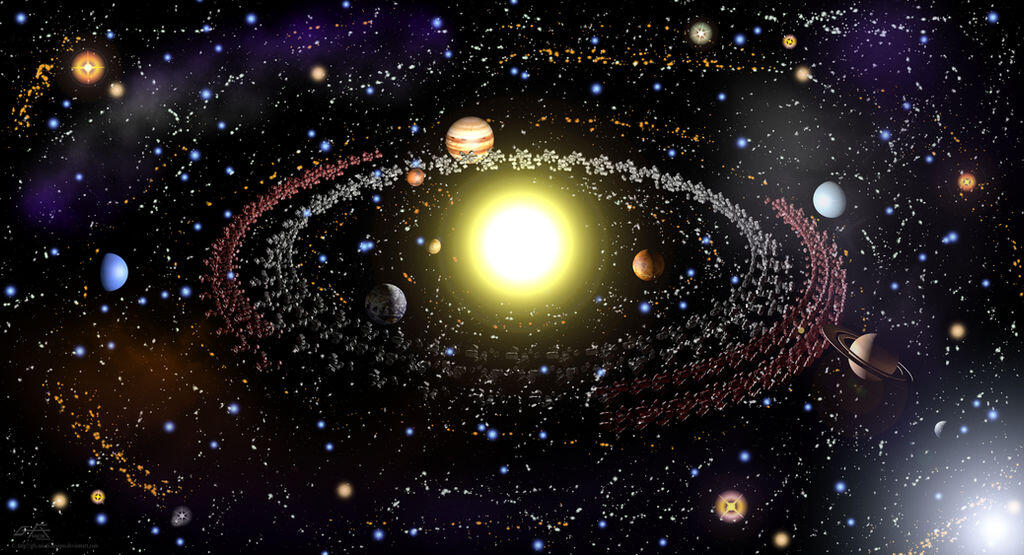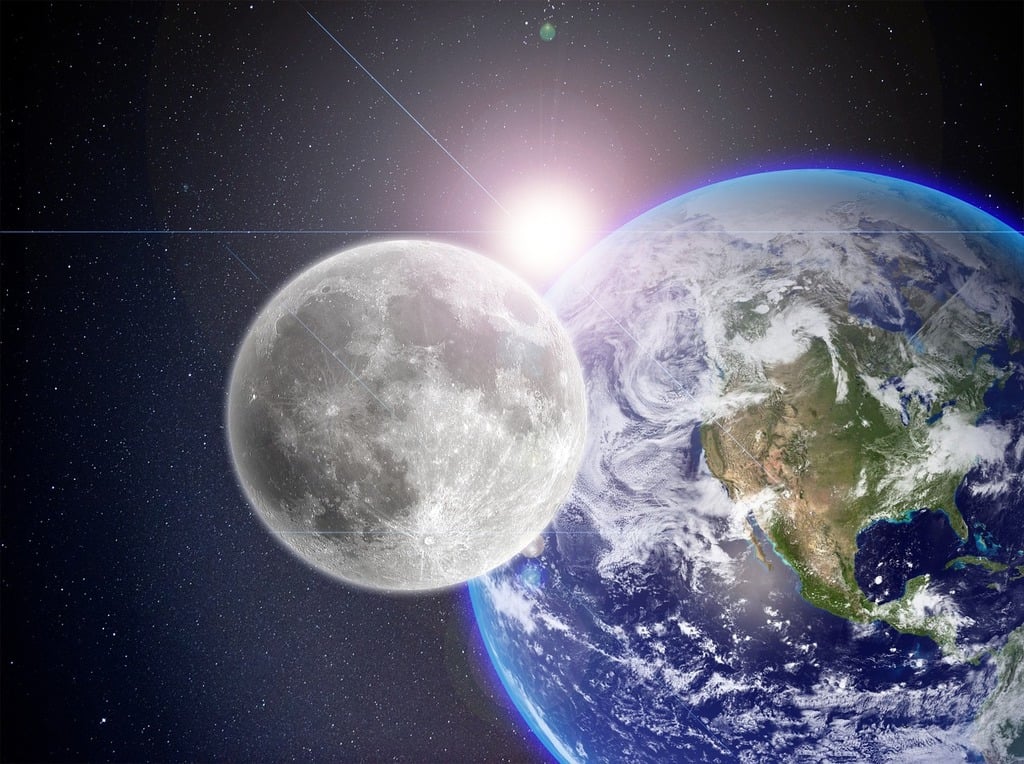The planets in our solar system have captivated human curiosity for centuries, serving as the foundation for countless scientific explorations and discoveries. From the scorching heat of Venus to the swirling storms of Jupiter, each planet presents its unique characteristics and mysteries. Understanding these celestial bodies offers a glimpse into the complex forces that shaped not only our solar system but also the universe. Let us delve into the fascinating features of the eight planets, including their sizes, compositions, atmospheres, and the remarkable phenomena that make them distinct.

Our Solar System
The Solar System consists of the Sun, eight planets, and numerous smaller celestial bodies. It originated around 4.5 billion years ago and is located in one of the outer spiral arms of the Milky Way galaxy. The Sun is at the center, with all objects in the system revolving around it at different speeds.
The Solar System extends outward from the Sun, passing the four terrestrial planets, through the asteroid belt, beyond the four gas giants, and continues into the Kuiper Belt, eventually reaching the teardrop-shaped heliopause.
The Oort Cloud represents the outer boundary of the Solar System, where the Sun's gravitational influence wanes, and nearby stars' gravity begins to take over. The inner edge of the Oort Cloud may be about 2,000 astronomical units (AU) from the Sun, and its outer boundary could reach up to 100,000 AU. One AU is the average distance from Earth to the Sun, approximately 149.6 million kilometers (92.96 million miles), as defined by the International Astronomical Union (IAU).
The Planets
Long ago, people observed that some stars appeared to move across the sky among the many fixed stars. These wandering objects were named "planets," meaning "wanderers." However, we now understand that planets are not stars; instead, they are nearby celestial bodies that orbit our Sun. While many objects revolve around the Sun, only some are classified as planets.

Order of Planets in Our Solar System
| Planet | Distance from the Sun (in kilometers) |
| Mercury | 58 million |
| Venus | 108 million |
| Earth | 149.7 million |
| Mars | 227.9 million |
| Jupiter | 778 million |
| Saturn | 1.4 billion |
| Uranus | 2.9 billion |
| Neptune | 4.5 billion |
Our solar system consists of eight planets that orbit the Sun in the following order of distance: Mercury, Venus, Earth, Mars, Jupiter, Saturn, Uranus, and Neptune. These planets fall into two categories based on their densities. The four inner planets—Mercury, Venus, Earth, and Mars—are known as terrestrial planets. They are composed of rock and have high densities, exceeding 3 grams per cubic centimeter (for comparison, water's density is 1 gram per cubic centimeter).
The outer planets—Jupiter, Saturn, Uranus, and Neptune—are called Jovian or gas giants. They are much larger, with densities below 2 grams per cubic centimeter. These planets are composed primarily of hydrogen and helium (Jupiter and Saturn), while Uranus and Neptune have a mix of ice, rock, hydrogen, and helium. The dwarf planet, Pluto, once considered the ninth planet, is a small, icy body more akin to comets or the large icy moons found around the outer planets. Its inclusion in the Kuiper Belt, a region beyond Neptune, helps explain its unusual characteristics.
Planet Size (from Largest to Smallest)

| Planet | Diameter (in Kilometers) | |
| 1 | Jupiter | 139820 |
| 2 | Saturn | 116460 |
| 3 | Uranus | 50724 |
| 4 | Neptune | 49244 |
| 5 | Earth | 12742 |
| 6 | Venus | 12104 |
| 7 | Mars | 6779 |
| 8 | Mercury | 4879 |
Jupiter
Jupiter, the largest planet in our solar system, is approximately 11 times wider than Earth, with an equatorial diameter of about 142,984 kilometers (88,846 miles). It is the fifth planet from the Sun and orbits at an average distance of 778 million kilometers (483.7 million miles), making it about five times farther from the Sun than Earth.
Saturn
Saturn, famous for its stunning icy rings, is the second-largest planet in our solar system. It is roughly nine times wider than Earth, with an equatorial diameter of about 120,536 kilometers (74,898 miles). Saturn, the sixth planet from the Sun, orbits at an average distance of 1.4 billion kilometers (889.8 million miles), placing it about 9.5 times farther from the Sun than Earth.
Uranus
Uranus ranks as the third-largest planet in the solar system, being about four times wider than Earth. It has an equatorial diameter of about 51,118 kilometers (31,763 miles) and orbits the Sun at an average distance of 2.9 billion kilometers (1.8 billion miles), making it nearly 19 times farther from the Sun than Earth.
Neptune
Neptune, the fourth-largest planet, is also about four times wider than Earth, with an equatorial diameter of around 49,528 kilometers (30,775 miles). It is the eighth and farthest planet from the Sun, orbiting at an average distance of 4.5 billion kilometers (2.8 billion miles), which is about 30 times the Earth-Sun distance.
Earth
Earth is the fifth-largest planet, with an equatorial diameter of roughly 12,756 kilometers (7,926 miles). It is the third planet from the Sun and orbits at an average distance of 149.7 million kilometers (93 million miles).
Venus
Venus, the sixth-largest planet, is very similar in size to Earth, with an equatorial diameter of about 12,104 kilometers (7,521 miles), often earning it the nickname "Earth’s twin." Venus is the second planet from the Sun and orbits at an average distance of 108 million kilometers (67.2 million miles), making it about 42 million kilometers (26 million miles) closer to the Sun than Earth.
Mars
Mars, known as the Red Planet, is the seventh-largest planet in the solar system. It is about half the size of Earth, with an equatorial diameter of approximately 6,792 kilometers (4,221 miles). Mars is the fourth planet from the Sun and orbits at an average distance of 227.9 million kilometers (141.6 million miles), placing it about 79 million kilometers (49 million miles) farther from the Sun than Earth.
Mercury
Mercury, the smallest planet, is just over one-third the width of Earth, with an equatorial diameter of about 4,880 kilometers (3,032 miles). It is the closest planet to the Sun, orbiting at an average distance of 58 million kilometers (36 million miles), making it 57 million kilometers closer to the Sun than Earth.
Fascinating Facts About the Planets in Our Solar System
The planets in our solar system are rich with fascinating characteristics that make them unique, each offering insights into the complex workings of our cosmic neighborhood. These planetary facts highlight the incredible diversity and wonder within our universe, each planet presenting its own set of mysteries and wonders that continue to captivate scientists and astronomers alike.

Here are some intriguing facts about the eight planets:
- Mercury: The closest planet to the Sun, Mercury experiences extreme temperature fluctuations, with daytime temperatures soaring to 430°C (800°F) and plunging to -180°C (-290°F) at night. Surprisingly, Mercury has no atmosphere to trap heat, which explains these drastic shifts. Despite being the smallest planet, Mercury has a surprisingly large iron core, which takes up about 85% of the planet's radius. This makes Mercury one of the most dense planets in the solar system, second only to Earth.
- Venus: Often called Earth's twin due to its similar size, Venus is the hottest planet in the solar system, with surface temperatures around 465°C (869°F). Its thick atmosphere, composed primarily of carbon dioxide, creates a runaway greenhouse effect, trapping immense heat. Venus also has clouds of sulfuric acid, making it a hostile environment. A day on Venus is longer than a year. It takes Venus about 243 Earth days to complete one full rotation on its axis, while it only takes 225 Earth days to orbit the Sun. This slow rotation means Venus has the longest day of any planet in the solar system.
- Earth: Earth is the only known planet to support life, thanks to its perfect distance from the Sun, liquid water, and protective atmosphere. Its biosphere, oceans, and atmosphere work together to regulate temperatures and maintain the conditions necessary for life. Earth has a relatively large moon compared to its size. The Moon, with about a quarter of Earth's diameter, plays a crucial role in stabilizing Earth's axial tilt, which helps moderate the planet's climate over long periods.
- Mars: Known as the Red Planet due to its iron oxide-rich surface, Mars has the largest volcano in the solar system, Olympus Mons, standing three times the height of Mount Everest. Mars is a prime candidate for future human exploration because of its potential to host life, especially with evidence of water in its past. Mars experiences planet-wide dust storms, the largest in the solar system. These storms can cover the entire planet and last for weeks or even months, affecting surface visibility and temperature.
- Jupiter: The largest planet in the solar system, Jupiter has more than twice the mass of all other planets combined. Its most iconic feature is the Great Red Spot, a massive storm that has raged for at least 400 years. Jupiter also has at least 79 moons, including Ganymede, the largest moon in the solar system. Jupiter generates more heat internally than it receives from the Sun. This is due to its large size and gravitational compression, which causes the planet to slowly release energy. This internal heat drives the planet’s turbulent weather systems, including its iconic Great Red Spot.
- Saturn: Saturn is famous for its spectacular ring system, composed of ice, rock, and dust particles. Despite its size, Saturn is the least dense planet in the solar system; if there were a large enough ocean, Saturn would float in it. Its moon Titan is also noteworthy, with a thick atmosphere and liquid methane lakes on its surface. Saturn’s rings are incredibly thin despite their vast size. Although they stretch over 280,000 kilometers (175,000 miles) in diameter, they are only about 10 to 20 meters (33 to 66 feet) thick. They are made mostly of water ice, with particles ranging in size from tiny grains to large boulders.
- Uranus: Uranus is unique because it rotates on its side, with an axial tilt of about 98 degrees. This results in extreme seasonal variations, with each pole experiencing 42 years of continuous sunlight followed by 42 years of darkness. It also has faint rings and a cold atmosphere composed primarily of hydrogen, helium, and methane. Uranus emits very little heat compared to other planets, and scientists are still unsure why. Its temperature is colder than that of Neptune, despite Uranus being closer to the Sun. This lack of internal heat makes Uranus one of the coldest planets in the solar system.
- Neptune: Neptune, the furthest planet from the Sun, has the strongest winds in the solar system, reaching speeds of over 2,000 kilometers per hour (1,200 miles per hour). Its deep blue color is due to the presence of methane in its atmosphere. Neptune also has a giant storm system, similar to Jupiter’s Great Red Spot, known as the Great Dark Spot. Neptune has 14 known moons, the largest of which is Triton. Triton is unique because it orbits Neptune in the opposite direction of the planet’s rotation, a phenomenon known as a retrograde orbit. This suggests that Triton may have been a captured object from the Kuiper Belt, rather than forming around Neptune.
The Wonders of Our Cosmic Neighborhood
The planets in our solar system, in addition to the exoplanets, showcase a remarkable variety of characteristics, from the fiery heat of Venus to the icy depths of Neptune. Each planet’s unique composition, size, and distance from the Sun reveal important insights into the formation and evolution of our cosmic neighborhood. As our technology advances, we continue to uncover new scientific facts that deepen our understanding of these celestial bodies. Whether it's the potential for life on Mars, the swirling storms of Jupiter, or the icy rings of Saturn, the planets offer endless intrigue and inspiration. Exploring these worlds helps us appreciate the complexities of our solar system and our place within it. The journey of discovery is far from over, as space missions and scientific advancements continue to expand our knowledge of the wonders beyond Earth.















